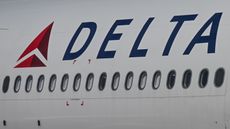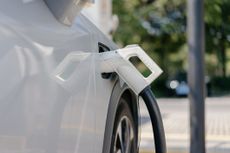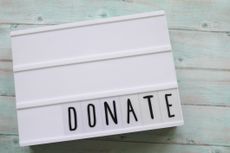New Rules for Tax-Free Spending From Your 529 College-Savings Plan
Computers not specifically required for attendance are back on the list, as well as printers and the cost of Internet access.

I hear there are new rules about using 529 money tax-free for computers. What are the rules, and what other expenses are fair game for using 529 money tax-free? What records do I need to keep?
Congress recently passed legislation that permits the tax-free use of 529 money for computers – both retroactively for 2015 and permanently for future years (see 12 Valuable Tax Breaks Congress Brought Back to Life). A computer had been an eligible expense for tax-free withdrawals from a 529 in 2009 and 2010, but for the past few years it was eligible for tax-free withdrawals only if the computer was required by the college for attendance. Now you can take tax-free withdrawals for a computer, printer, scanner and other peripheral equipment, education-related software (not games) and the cost of Internet access – whether or not it is required by the school. The college student must be the primary user of the computer and equipment.
You can also use 529 money tax-free for college tuition, room and board, fees and required books. "Most of the expenses related to taking classes count, but you can’t use it for transportation," says Mary Morris, chairman of the College Savings Foundation and CEO of the Virginia 529 College Savings Plan.

Sign up for Kiplinger’s Free E-Newsletters
Profit and prosper with the best of expert advice on investing, taxes, retirement, personal finance and more - straight to your e-mail.
Profit and prosper with the best of expert advice - straight to your e-mail.
You can even use 529 money tax-free for room and board if you live off-campus, as long as you're attending college at least half-time. Your actual expenses count, up to the amount the college specifies as the room and board figure in its cost of attendance for federal financial aid purposes (the cost is usually listed on the college's Web site, or ask the financial aid office).
You don't need to provide special documentation to your college savings plan administrator to withdraw money, but you do need to keep records of your expenses or the date and price of the purchases in your tax files. "If you're audited, you need to be able to establish that the 529 withdrawal was for qualified higher education expenses and that you have the records to match up with that," says Morris.
In years you make 529 withdrawals, you'll get a 1099-Q tax form from the plan administrator, usually by January 31 of the following year (although some may be delayed by a few weeks this year because of a technical change in how administrators report withdrawals, which was also included in the law signed in December). If the withdrawals were for eligible expenses, you don't need to do anything when you file your taxes – just keep the 1099-Q form and your receipts in your tax records. But if you use 529 money for any ineligible expenses, you'll have to pay taxes and a 10% penalty on the earnings withdrawn. The 1099-Q will specify which portion of the withdrawal is considered principal and which is earnings.

To continue reading this article
please register for free
This is different from signing in to your print subscription
Why am I seeing this? Find out more here

As the "Ask Kim" columnist for Kiplinger's Personal Finance, Lankford receives hundreds of personal finance questions from readers every month. She is the author of Rescue Your Financial Life (McGraw-Hill, 2003), The Insurance Maze: How You Can Save Money on Insurance -- and Still Get the Coverage You Need (Kaplan, 2006), Kiplinger's Ask Kim for Money Smart Solutions (Kaplan, 2007) and The Kiplinger/BBB Personal Finance Guide for Military Families. She is frequently featured as a financial expert on television and radio, including NBC's Today Show, CNN, CNBC and National Public Radio.
-
 Earn Delta SkyMiles Worth Up to $1,800 with an AMEX Business Card
Earn Delta SkyMiles Worth Up to $1,800 with an AMEX Business CardDelta SkyMiles and American Express offer 150,000 on business credit card for new cardholders.
By Ellen Kennedy Published
-
 Stock Market Today: Markets Soar Amid Strong Earnings for Big Tech
Stock Market Today: Markets Soar Amid Strong Earnings for Big TechEquities ended the week on an up note thanks to some of the market's biggest names.
By Dan Burrows Published
-
 Don’t Miss This $2,500 Tax Break for Paying Your Student Loan
Don’t Miss This $2,500 Tax Break for Paying Your Student LoanTax Deductions Do you qualify for the student loan interest deduction this year?
By Katelyn Washington Last updated
-
 The EV Tax Credit Changed Again New Year’s Day: What to Know
The EV Tax Credit Changed Again New Year’s Day: What to KnowTax Credits The federal tax credit for electric vehicles has changed again for 2024. Here’s what you need to know if you want to buy an EV.
By Kelley R. Taylor Last updated
-
 Charitable Donations: What To Know About Scams and Taxes Before You Give
Charitable Donations: What To Know About Scams and Taxes Before You GiveDonations Giving to a charity can make you feel good and lower your tax bill, but the IRS says to beware of fake charities.
By Katelyn Washington Last updated
-
 Maryland Student Loan Tax Credit: What You Should Know
Maryland Student Loan Tax Credit: What You Should KnowState Tax Who gets a Maryland student loan tax credit?
By Katelyn Washington Published
-
 Texas Tampon Tax is Now Eliminated
Texas Tampon Tax is Now EliminatedPink Tax The new sales tax exemption for feminine hygiene products in Texas became effective September 1.
By Katelyn Washington Published
-
 Want to Lease an EV? There's a Tax Credit 'Loophole' for That
Want to Lease an EV? There's a Tax Credit 'Loophole' for ThatTax Credits If you're trying to decide whether to lease or buy a car, here's what you need to know about how the EV lease tax credit works.
By Kelley R. Taylor Last updated
-
 States That Still Tax Diapers
States That Still Tax DiapersSales Taxes Most states still tax diapers. Is your state one of them?
By Katelyn Washington Last updated
-
 Your Credit Card Late Fees Could be Slashed, Thanks to CFPB Proposals
Your Credit Card Late Fees Could be Slashed, Thanks to CFPB ProposalsFederal bureau CFPB moves to rein in credit card late fees, which could save customers as much as $9 billion a year.
By Erin Bendig Published